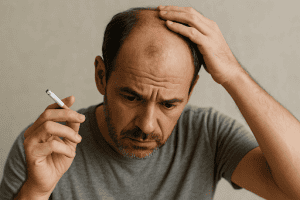Key Takeaways
- Young adults are increasingly abusing gabapentin off-label, which often leads to addiction to both prescription drugs and opioids.
- A medically supervised detox program is essential to lower the risks of withdrawal and help with early recovery.
- Knowing how the alcohol detox process works helps you understand structured withdrawal care.
- Young people can make the right choice for long-term healing by knowing the difference between detox and rehab.
- Combining counseling and relapse prevention helps people stay sober after the worst of their withdrawal symptoms have passed.
Introduction
Gabapentin was first approved for nerve pain and seizure disorders. Still, now many young adults are using it for things like anxiety, insomnia, and bipolar disorder symptoms without a doctor’s permission. These uses may seem safe, but misusing gabapentin has been linked to higher health risks and dependence, especially when combined with other central nervous system depressants (Lennox & Mangin, 2019). In the past few years, healthcare workers have seen a significant rise in people who are addicted to gabapentin and other prescription drugs, especially in places like Chandler, Arizona. Gabapentin is often misused quietly, which makes it harder to recognize and treat right away, unlike other medications that people are concerned about right away. A professionally run detox program in Chandler is a great way to get the help you need to stop using drugs and stay sober for good, safely. These programs help patients understand the difference between detox and rehab, assist them in regaining their health, and begin planning for a more comprehensive recovery.What Goes On In A Medically Supervised Program?
Before starting structured detox, a complete assessment of the person’s physical health, history of substance use, and any other mental health issues they may have is done. When you stop taking gabapentin, you may have severe symptoms like shaking, restlessness, sweating, stomach problems, and, in rare cases, seizures. A medical detox program offers round-the-clock monitoring, help with symptoms, and mental health support. These safety measures are crucial for preventing problems and establishing a solid foundation for emotional stability. In many detox centers, the clinical staff begins providing psychological support immediately. They achieve this by utilizing early counseling and motivational interviewing to foster trust and help clients mentally prepare for the next steps in their treatment.How Does The Normal Process Of Getting Off Alcohol Help With Getting Off Gabapentin?
Even though alcohol and gabapentin work on different neurotransmitter systems, the way they are withdrawn can be similar. Researchers have looked into the alcohol detox procedure a lot, and it usually includes watching for seizures, delirium tremens, and heart problems. Gabapentin detox follows similar rules, such as slowly lowering doses instead of stopping all at once and adding medication-assisted support to make the transition easier (Annals of Pharmacotherapy, 2016). Medical detox teams use what they already know to make rules that make the process safer, less painful, and less likely to cause rebound anxiety or insomnia, which are common during gabapentin withdrawal. It’s also important to educate people about these processes, especially young adults who may not be familiar with detoxification.What Are The Risks Of Taking Gabapentin Without A Doctor’s Supervision?
When people take gabapentin without a doctor’s supervision, especially in high doses or with opioids or alcohol, the risk of overdose, respiratory depression, and addiction goes up a lot. It can also cause depersonalization or derealization, making people feel as though they are not connected to their body or surroundings. This is a symptom that is often not reported but is very distressing for the mind. Many people don’t think gabapentin is dangerous because it isn’t always classified as a controlled substance. Not knowing about this leads to misuse, delayed help, and more people becoming addicted to prescription drugs. Programs that focus on detoxing from prescription drugs help stop this trend by giving patients and their families science-based care and raising awareness.
What Is The Difference Between Detox And Rehab, And Why Is It Important?
A lot of young adults and their families think that detox is all they need. Detox is the first, short-term stage of care, which focuses solely on ensuring the patient’s medical stability and safety. But a rehab program gives you long-term treatment options like cognitive behavioral therapy (CBT), group counseling, trauma resolution, and planning for how to avoid relapsing. Detox gets rid of drugs like gabapentin, but it doesn’t deal with the emotional reasons people use drugs. People are more likely to relapse if they don’t go to rehab because they haven’t learned how to deal with triggers. Detox followed by inpatient or outpatient rehab greatly increases the chances of success.What Types of Help Do People Receive After They Complete Detox?
There are various types of post-detox services, but the most effective ones provide a comprehensive range of care. This includes referring individuals to intensive outpatient programs, providing them with ongoing access to therapists, engaging family members, and, if necessary, continuing to monitor their health and well-being. For young adults, this also means dealing with problems in their lives, such as dropping out of school, having unhealthy relationships, and not knowing how to manage stress. Using motivational interviewing and behavioral therapies early on helps clients reconnect with their goals and values. Case managers can also assist individuals in transitioning to longer-term residential or outpatient treatment centers that specialize in helping young adults recover from substance use disorders.Conclusion
Medical supervision, individualized care, and a plan for going to therapy or rehab after gabapentin detox are all important, especially when dealing with young adults who are using it off-label. If you try to quit without help, you could get dangerous withdrawal symptoms, become mentally unstable, and relapse quickly. A detox program is safe, well-organized, and provides access to additional recovery resources. There is hope for young adults who are addicted to prescription drugs. With medical supervision, effective therapy, and careful planning, it is possible to make a full recovery. Call Virtue Recovery Chandler at 866-338-5779 right away if you or someone you care about is abusing gabapentin or other prescription drugs. You can start on the road to a better future right now.How Does Off-Label Misuse of Gabapentin Relate to the Use of Cutting Agents in Street Heroin?
The misuse of gabapentin off-label raises concerns similar to those surrounding street heroin cutting agents explained. Both substances can create unpredictable effects, leading users to combine them for enhanced experiences. This risky behavior can amplify potential side effects, highlighting the dangers associated with unregulated use in both the pharmaceutical and illicit drug domains.
FAQs
How long does it take to get off gabapentin?
Depending on how much you use and how healthy you are, withdrawal can start 12 to 48 hours after the last dose and last 5 to 10 days.Is it possible to detox from gabapentin at home?
It is not safe to detox at home because of the risk of seizures. Medical detox makes sure you are safe and comfortable.Can you get help for gabapentin addiction?
Yes. Long-term recovery is possible with detox, rehab, and strategies to keep from relapsing.Can detox also help with other problems that happen at the same time, like anxiety or sleep problems?
Yes, a lot of programs offer psychiatric help and dual-diagnosis care while you detox.Does insurance pay for gabapentin detox in Chandler?
Most plans cover some or all of the costs. For exact information, call your provider or facility.Resources:
-
- Smith, Rachel Vickers, et al. “A Qualitative Analysis of Gabapentin Misuse and Diversion among People Who Use Drugs in Appalachian Kentucky.” Psychology of Addictive Behaviors, vol. 32, no. 1, Dec. 2017, pp. 115–121. PubMed Central, U.S. National Library of Medicine, https://www.ncbi.nlm.nih.gov/pmc/articles/PMC5805633/
-
- Lennox, Robin, and Dee Mangin. “Gabapentin Misuse.” CMAJ, vol. 191, no. 2, 14 Jan. 2019, article E47. PubMed Central, U.S. National Library of Medicine, https://www.ncbi.nlm.nih.gov/pmc/articles/PMC6333539/
-
- “Gabapentin: Abuse, Dependence, and Withdrawal.” Annals of Pharmacotherapy, Mar. 2016; U.S. National Library of Medicine (PubMed), https://pubmed.ncbi.nlm.nih.gov/26721643/








